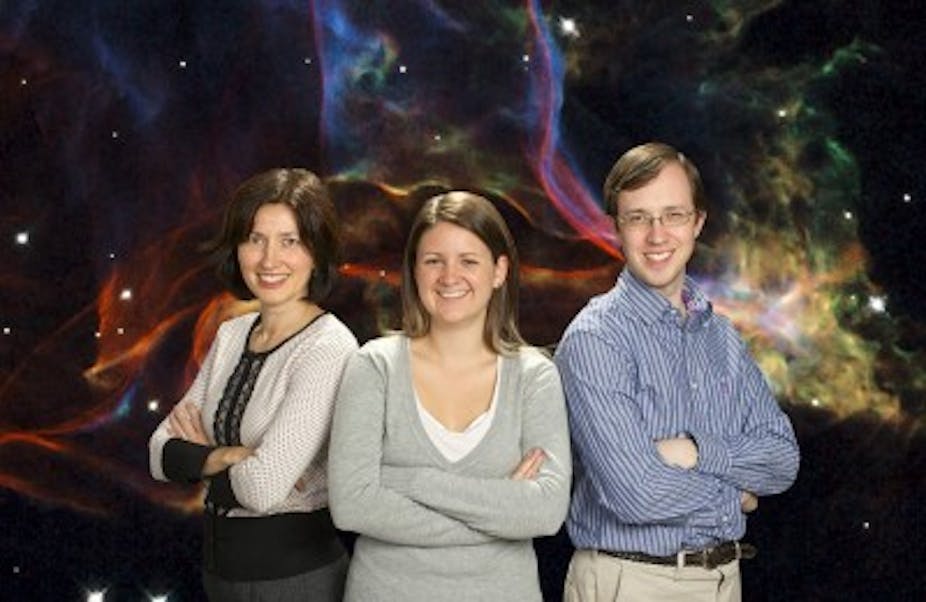An undergraduate astrophysics student at Monash University has detected some of the universe’s “missing mass”, solving a problem that had confounded scientists for many decades.
Amelia Fraser-McKelvie undertook a three-month summer internship with Monash University’s School of Physics under the supervision of two of the School’s astrophysicists: Dr Jasmina Lazendic-Galloway and Dr Kevin Pimbblet.
Astrophysicists have long believed that the universe holds more mass than exists within the planets, stars and dust that can be readily observed but, until now, that missing mass has remained undetected.
According to Dr Kevin Pimbblet, existing numerical models had pointed to a possible location for the missing mass.
“It was predicted that the majority of this missing mass should be located in large-scale cosmic structures called filaments – a bit like thick shoelaces,” said Dr Pimbblet.
These low-density, high-temperature filaments span vast distances between clusters of galaxies. Due to their high temperature – approximately 1 million degrees Celsius – the filaments are theoretically detectable within the X-ray range of the electromagnetic spectrum.
But until now, that hypothesis had not been confirmed.
By conducting a targeted X-ray search of regions within the local universe, Fraser-McKelvie was able to confirm the hypothesis that the filaments do contain some of the universe’s missing mass.
The discovery came as something of a surprise to Fraser-McKelvie, and the gravity of her findings were only confirmed after consulting with Dr Lazendic-Galloway.
“Jasmina reanalysed our results to find that we had in fact detected the filaments in our data, where previously we believed we had not”, Ms Fraser-McKelvie said.
The findings have been published in an article for the Monthly Notices of the Royal Astronomical Society, one of the discipline’s most reputable and prestigious journals.
Fraser-McKelvie said that without the support of her supervisors, the discovery and subsequent publication of her findings would not have been possible.
“Being a published author is very exciting for me, and something I could never have achieved without the help of both Kevin and Jasmine,” she said.
“Their passion and commitment for this project ensured a great result and I am very thankful to them for all the help they have given me and time they have invested.”
The discovery is likely to pave the way for future investigations of matter-rich filaments, with experiments slated to take place at the Australian Square Kilometre Array Pathfinder currently being built in Boolardy, Western Australia.

